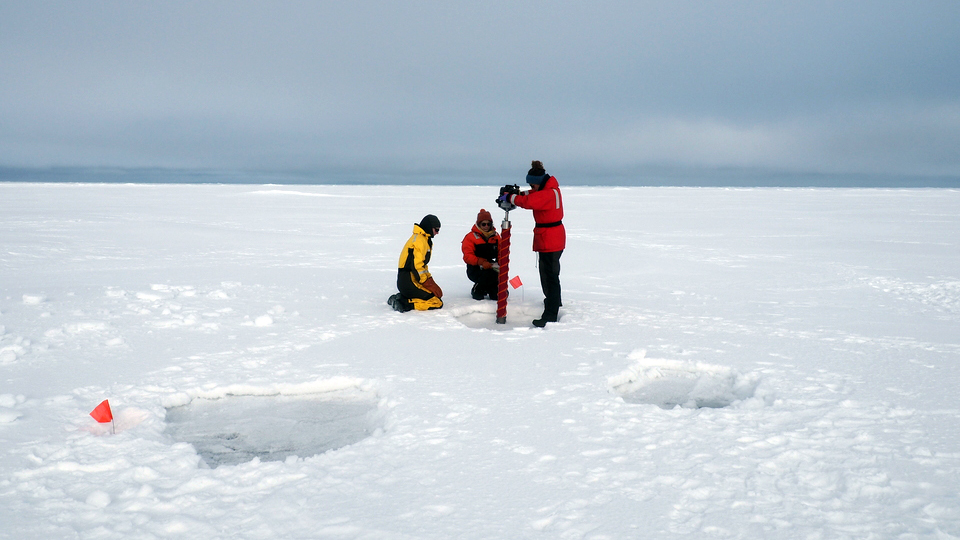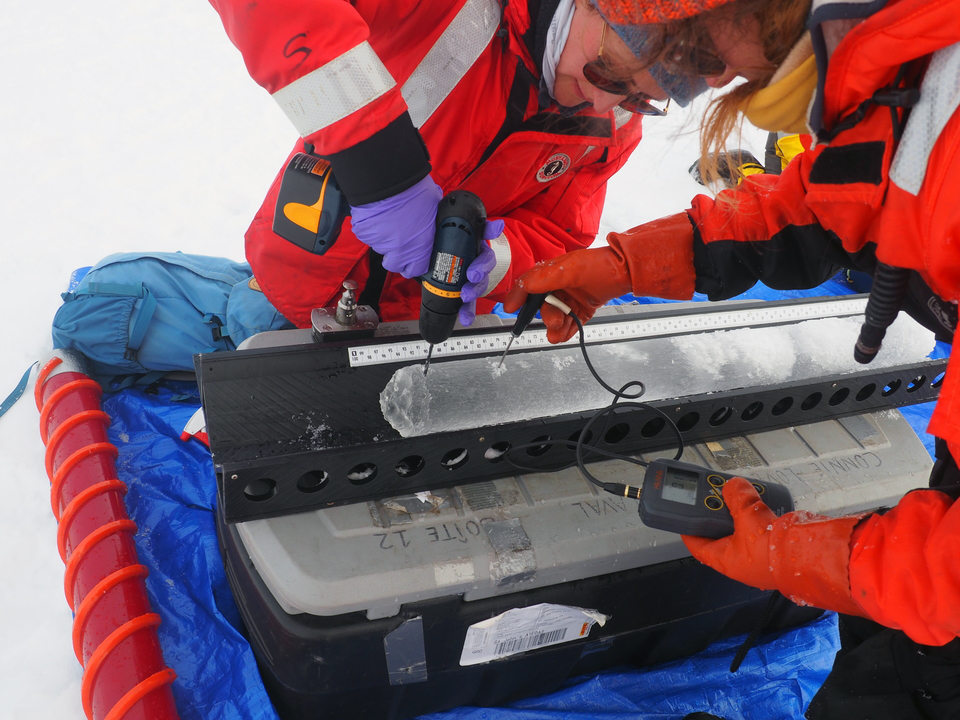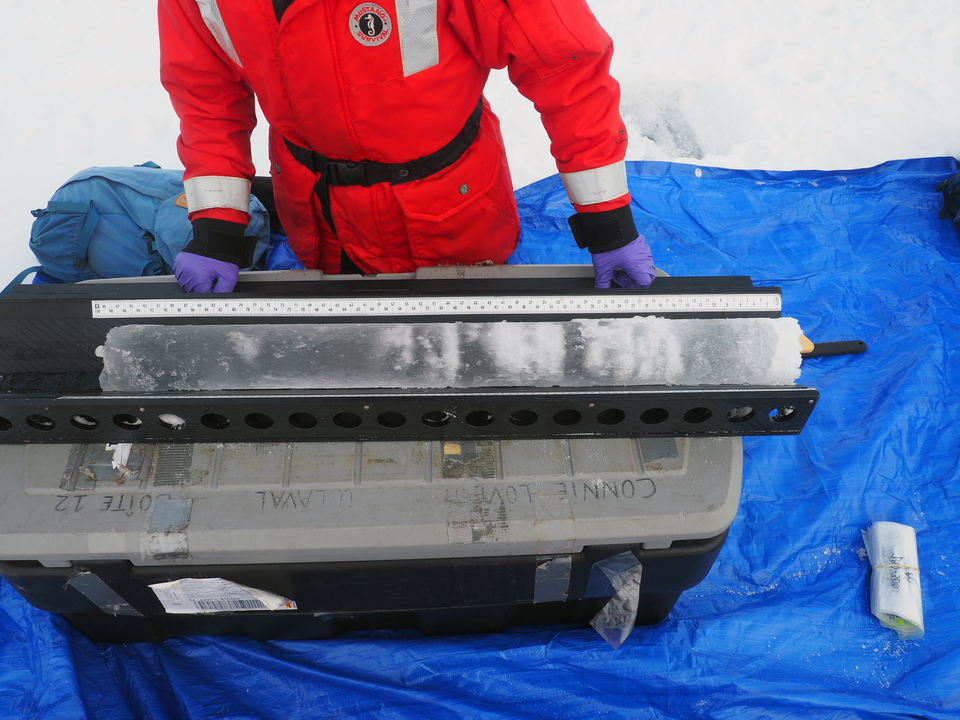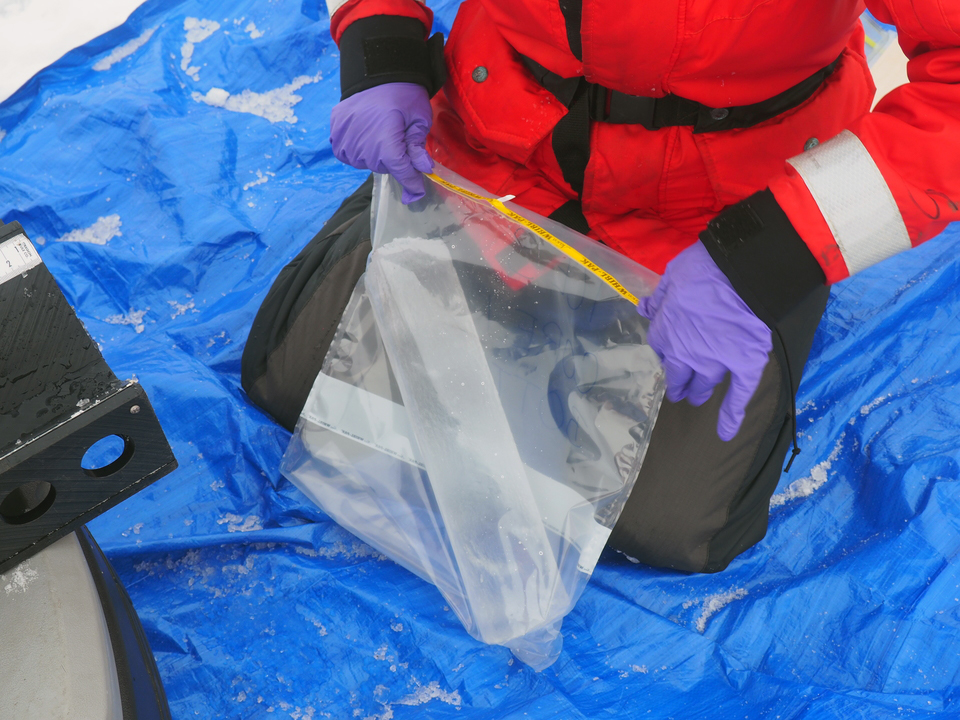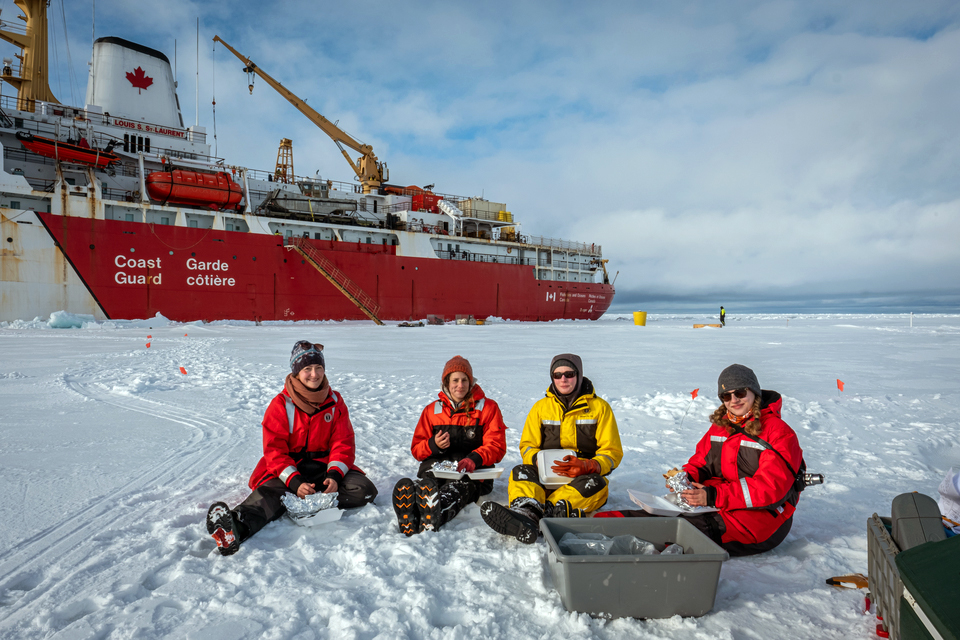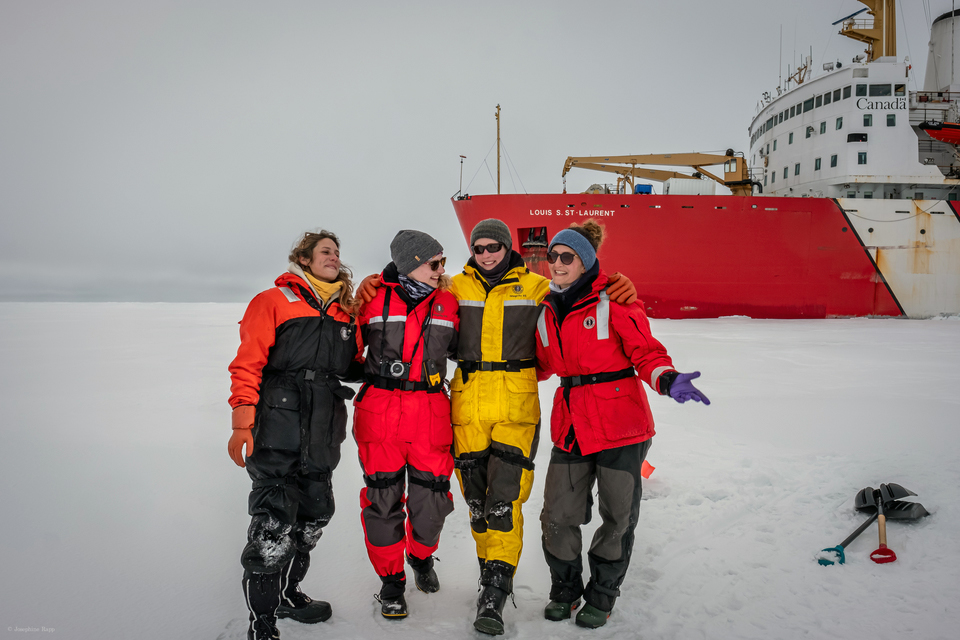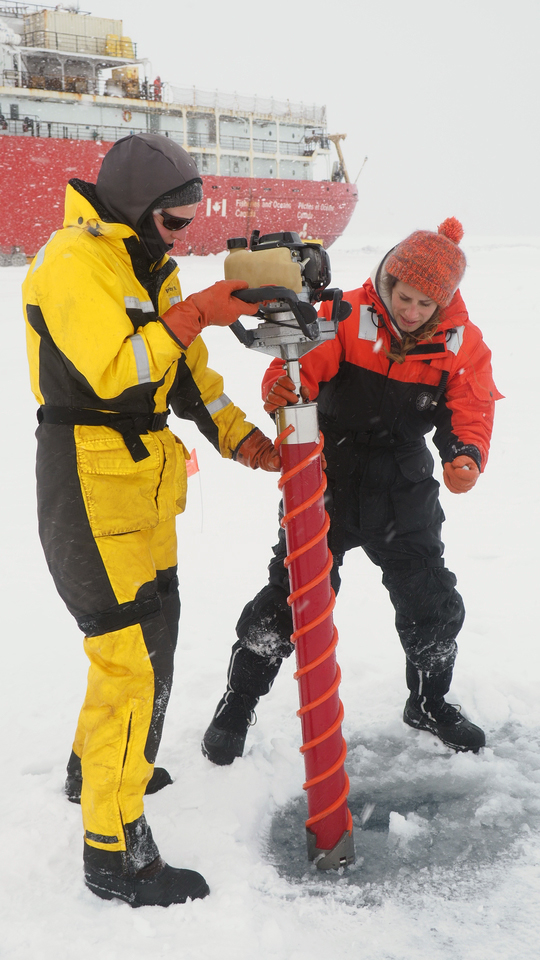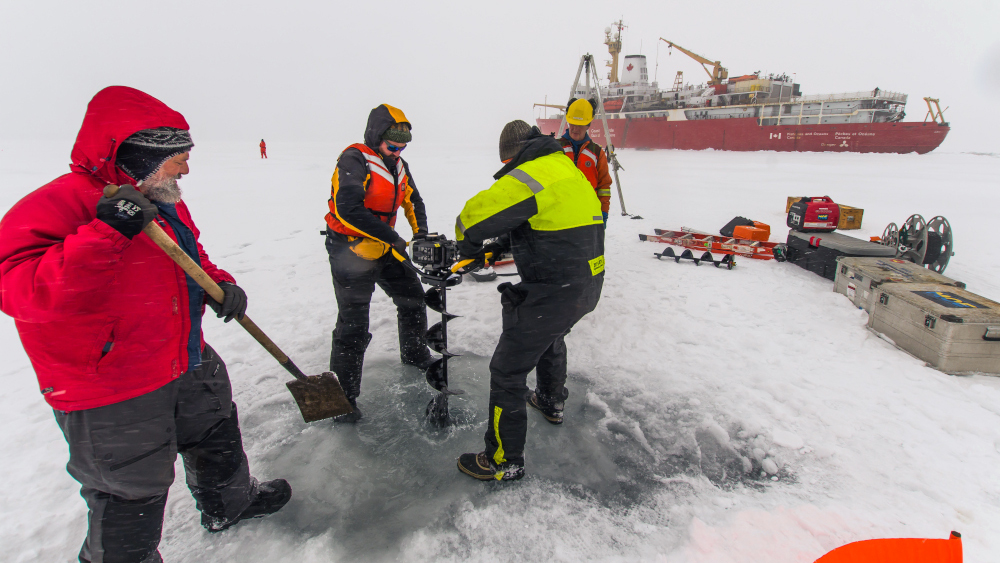Dispatch 13: The Secret Life of Wild Microbes and Viruses in Arctic Sea Ice
Josephine Rapp
September 3, 2021
The door to the ship’s main lab holds our science note board, which we use to keep everyone updated with the current station planning. When I woke up today it read “Ice stations complete! Congrats!” and – yes - that is a reason to celebrate! My name is Josephine Rapp and I’m a marine microbial ecologist with a focus on the cryosphere. “Cryosphere” is a collective term for environments where most water is present in its frozen state, for example sea ice, glaciers, and permafrost. Even though these environments may appear to be uncomfortable and harsh living spaces, they are home to diverse and abundant small organisms and their viruses. Within sea ice, these communities are concentrated within pockets of brine, very salty liquid inclusions that form during the freezing process of seawater. Because these brines can be over 6 times saltier than the ocean, they remain liquid even at temperatures below –20˚C/–4˚F and offer living space for microbes year-round. In just one tablespoon of sea-ice brine there may be up to 1,500,000,000 bacteria and 15,000,000,000 viruses!
I am part of a larger team of scientists at University Laval in Quebec City studying ice microbiomes across the Arctic as these delicate environments disappear. During this year’s JOIS expedition, I’m collecting sea ice cores and surface ocean water from our northernmost sampling stations. I am mostly interested in bacteria and viruses in these samples, and their interactions with each other. Despite their small size, bacteria play major roles for the functioning of an ecosystem by driving the recycling of carbon and nutrients. Viruses can have strong effects on the system by killing or manipulating parts of the bacterial community.
So here we are, between 78° and 79° North. We have been surrounded by sea ice for days, but finding the perfect ice floe work was still tricky. Both ice thickness and floe size needed to support the big WHOI operations (see previous dispatch) as well as our smaller-scale biological work. After some searching, we got lucky and got two full days out on the ice for the coring work. We were an all-female team of four: my colleague Aurélie Labarre, who will study the larger sized algae in the samples, Kristina Brown, an absolute ice coring pro, Helen Gemmrich, who documented our sampling efforts and helped keep us organized, and myself. From a first thickness survey, we identified a potential work area of approximately 4 x 4 meters where the ice looked flat and solid, and not affected by melt ponds. After clearing the snow from our designated coring site, we started off with two cores for salinity and temperature measurements. Once these cores were sliced and bagged up (for salinity) or processed on site (for temperature measurements), we could start with the actual biological sampling. Since the aim is to study the microbes living in these cores, we needed to create sterile working conditions. For each biology core, one person wore clean lab gloves to receive the core and process it. We sectioned the cores and allowed them to slowly melt in dark and cool conditions on the ship so that they could be filtered through different pore size filters. The concentrated biomass on these filters is stored at -80 °C for now, and we will later use it to extract the genetic information of sea ice algae, bacteria and viruses. Back home we will use these data to discover the secret survival tricks of these elusive extremophiles.
